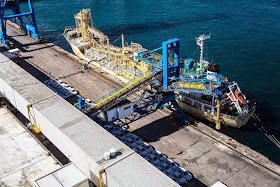Gerard Klein Essink is Director at Bridge2Food, which is located in Bilthoven, The Netherlands. The Bridge2Food company was founded in 2002 to provide research & consultancy services in fast-moving consumer categories. In recent years, international recognition has led to us developing platforms on food category trends such Sports & Performance Nutrition, Healthy Ageing, Healthy & Nutritional Bars, Ingredients with a specific protein focus and on Food Technology for food technology professionals.
What is Bridge2Food and how did it come about?
I have founded Bridge2Food in 2002 as a research and consultancy company. During the last 7 years we have gradually evolved into an insights, personal development and network company. The basis of the company is the large international food value chain network in retail, manufacturing, ingredients and technology.Why did you see an opportunity here and what are your ultimate goals for Bridge2Food?
I have always loved to accelerate innovation, and connecting and enabling people. Being able to connect the dots and make this faster is fun and rewarding. Sometimes in life you only realise later what the red thread through your work and life is, and I could connect the dots at Bridge2Food. Opportunities are things one sees earlier and faster than another. It is then key to fully embrace them, focus on quality and then just do it. I favour the quote of Michael Kottler: 'it is more important to do what is strategically right than what is immediately profitable'.The goal of Bridge2Food is to play an important role in the growth of innovation and personal development of companies and professionals in the food industry. We want to be the place where professionals are inspired, can develop personally and grow their networks.
What activities is it carrying out and how might they develop in the future?
We are organising platform meetings with the industries involved in sports and performance nutrition, bars and grains snacks, and healthy ageing, as well as proteins. The protein industry is heavily involved in the areas of global supply & demand, health & nutritional, and technology and new raw material opportunities at our annual Protein Summits. These are relevant platforms for the food, aquaculture, feed, pet food industries. Food proteins courses and a Top Class on protein nutrition are other development platforms.We foresee opportunities to open up our networks to professionals for further personal development. There are more and more demands on professionals to be more entrepreneurial. Open innovation and working with others across the value chain and industries is important and we can play a role since Bridge2Food has a large network, is known for quality and we have an international position.

















